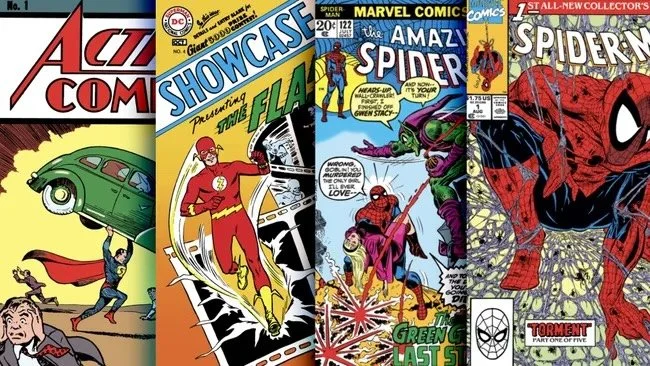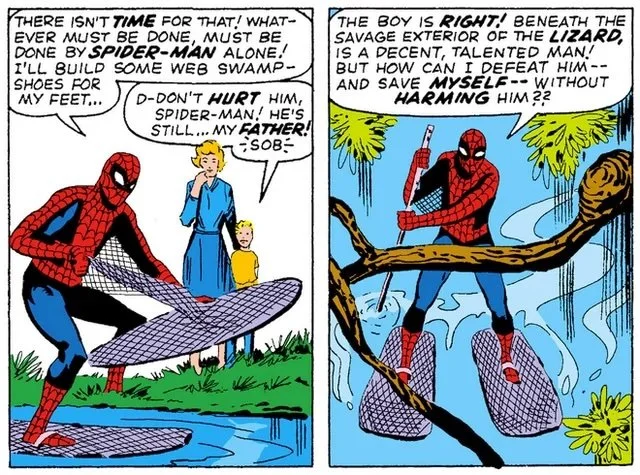Old vs. New Comic Books: Genres, Political Correctness, and the Lost Climax
Comic books have always been more than entertainment—they’re snapshots of the culture that produced them. When we stack Golden and Silver Age issues against modern runs, the differences aren’t just about paper quality or cover prices. They’re about genres explored, the way stories are told, and how cultural sensitivities reshape the medium.
The Golden Age and Silver Age: Genre Diversity
Back in the 1930s through the 1960s, superheroes didn’t completely dominate the shelves. War comics, romance titles, westerns, horror, and even funny animal books fought for readers’ attention. Sure, Superman, Batman, and Spider-Man became household names, but the industry thrived on variety. A young collector in 1955 could pick up a romance comic one week and a sci-fi alien invasion thriller the next.
Today, that diversity has narrowed. Superheroes rule almost exclusively, with independent publishers occasionally reviving horror or crime. But even then, genre-bending stories usually get filtered through the superhero lens. Modern readers may get richer art and longer arcs, but the smorgasbord of genres has been reduced to a single main course.
Political Correctness: A Double-Edged Sword
Old comics weren’t written with sensitivity in mind. Golden Age caricatures of race, gender roles that reduced women to “damsels,” and casual stereotypes were common. They reflected the culture—warts and all.
Modern comics, by contrast, have swung heavily in the opposite direction. Publishers are keenly aware of diversity, inclusion, and representation. This has given rise to new characters, voices, and perspectives that were absent for decades. But critics argue that the pendulum sometimes swings too far, with storytelling sacrificed for the sake of messaging. A once morally gray villain might now be softened to avoid controversy, or a story arc reshaped to fit modern sensibilities rather than its internal logic.
The result? Cleaner, fairer, more inclusive comics—but occasionally at the expense of risk-taking.
Storytelling and the Lost Climax
Ask any longtime reader and they’ll tell you: the pacing has changed. Older comics were tight, often delivering a full beginning, middle, and explosive climax within 22 pages. Writers had no room to waste, so stories moved like freight trains. Think of Stan Lee’s early Spider-Man issues—conflict introduced by page 3, rising tension by page 10, and a gut-punch climax by the end.
New comics often sprawl across six or twelve issues—sometimes written with trade paperbacks and Netflix pitches in mind. The “decompression” style means that instead of a punchy climax, readers may get a cliffhanger or a promise of resolution in three months. For collectors, this format dilutes the thrill. The single issue, once a complete experience, now feels like a chapter torn out of a novel.
The Cultural Trade-Off
So what’s been gained and lost?
Gained: Inclusivity, complexity, and the courage to tell stories once silenced.
Lost: The sense that comics could be anything. The thrill of picking up three completely different worlds from one spinner rack is gone.
Old comics dared to explore romance, horror, war, and slapstick alongside their superheroes. New comics excel at digging deeper into identity and social consciousness, but often in one familiar costume.
It’s a trade-off: richer voices, fewer genres. And perhaps that’s why vintage comics still feel electric — they carry the echoes of entire storytelling worlds that the industry has, for now, left behind.
So, Which Era Wins?
Neither. The truth is, both have their strengths. Old comics gave us genre experimentation, raw storytelling energy, and unforgettable climaxes. New comics provide gorgeous art, complex themes, and a conscious effort to include everyone at the table.
But if you’ve ever felt that today’s comics sometimes lack a bit of the fire that made you fall in love with the medium in the first place—you’re not imagining it. The climax, both literal and cultural, isn’t what it used to be.




